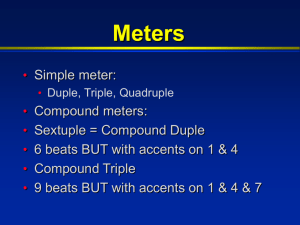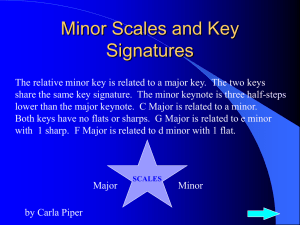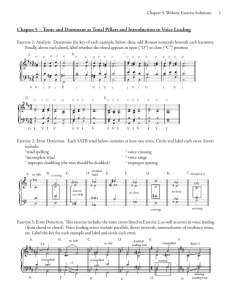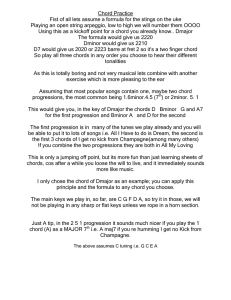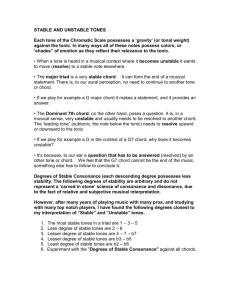Four-Voice Common Practice Part Writing
advertisement
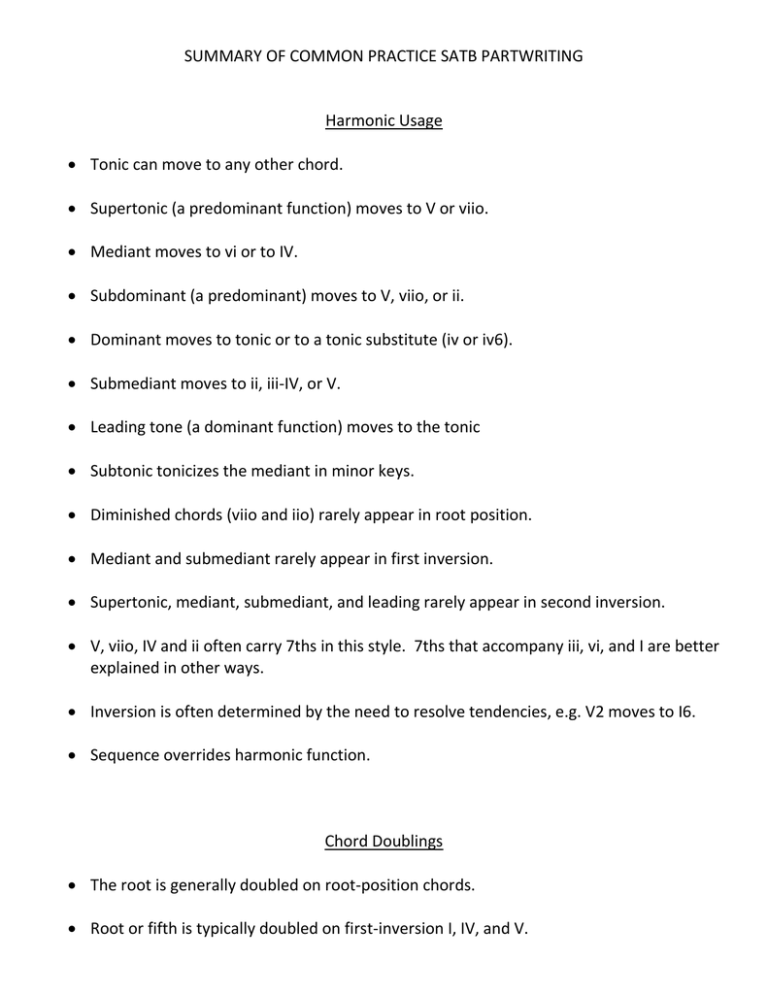
SUMMARY OF COMMON PRACTICE SATB PARTWRITING Harmonic Usage Tonic can move to any other chord. Supertonic (a predominant function) moves to V or viio. Mediant moves to vi or to IV. Subdominant (a predominant) moves to V, viio, or ii. Dominant moves to tonic or to a tonic substitute (iv or iv6). Submediant moves to ii, iii-IV, or V. Leading tone (a dominant function) moves to the tonic Subtonic tonicizes the mediant in minor keys. Diminished chords (viio and iio) rarely appear in root position. Mediant and submediant rarely appear in first inversion. Supertonic, mediant, submediant, and leading rarely appear in second inversion. V, viio, IV and ii often carry 7ths in this style. 7ths that accompany iii, vi, and I are better explained in other ways. Inversion is often determined by the need to resolve tendencies, e.g. V2 moves to I6. Sequence overrides harmonic function. Chord Doublings The root is generally doubled on root-position chords. Root or fifth is typically doubled on first-inversion I, IV, and V. The bass is doubled on second-inversion chords. The fifth can be omitted on dominant 7th, resulting in a distribution of two roots, one 3rd, and one 7th. This is generally not done when the chord appears in inversion. The 5th can be omitted on tonic, resulting in a distribution of three roots and one 3rd. The 3rd of vi is normally doubled on vi when it is preceded by V. The 3rd is doubled on root-position ii when the soprano progresses 3-4-5. Leading tones or altered tones are not doubled. Voice Leading Concerns o5ths contract to become M or m 3rds and +4ths expand to become 6ths. This application is not as strict if one member of the interval appears in an inner voice. Leading tone in an outer voice resolves to the tonic (may be delayed ornamentally). Soprano and bass voices tend to move in contrary or oblique motion, or in similar motion by successive 3rds or 6ths. Parallel 5ths and 8ves are prohibited unless the relationship cannot perceived by the listener. Approach to a perfect 5th or 8ve in the outer voices by similar motion is normally disallowed unless the bass moves by 5th and the soprano by step. All tendencies normally resolve when departing an inverted V7 chord. In general, leaps larger than a 4th should be avoided in interior voices. Voices should not cross. Overlapping is generally disallowed but can be accepted if by a very narrow interval. Part-Writing Procedures Suggested by Robert Ottman in his Elementary Harmony. Connecting two root position chords spelled the same with different soprano notes: To retain the same position, move the three upper voices to the nearest tones of the next chord. To change position, the bass and one other voice remain the same, the other two exchange letter names. Connection of root-position chords a 5th apart: To retain the same position, hold the common tone in the same voice, move the other tones to the nearest tones of the next triad, properly completing the doubling. To retain the same position, move the upper three voices to the nearest tones of the next chord. To change position, the 3rd of the first chord moves up or down a 4th to become the 3rd of the second, hold the common tone in the same voice, move the remaining voice by step to complete the doubling. Connection of root-position chords a 2nd apart: move every voice against the bass. Connection of root-position chords a 3rd apart: hold two common tones and move the other voice by step. To connect to an inverted chord: Determine the appropriate doubling. Approach the doubled tones by contrary or oblique motion then connect the remaining voice as smoothly as possible. Resolution of V7: The leading tone moves up by step and the chord 7th moves down by step. The leading tone can move down a 3rd to become 5th of the subsequent tonic if it is in an interior voice. Approach to V7: Visualize the connection as if the 7th was not present. Connect the remaining voices then replace the appropriate tone with the 7th.
